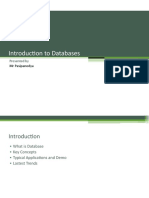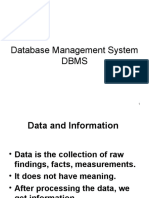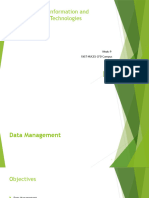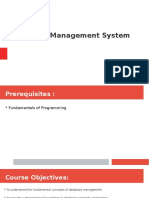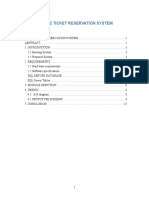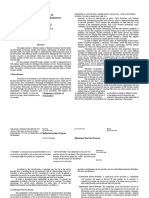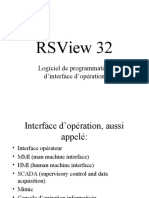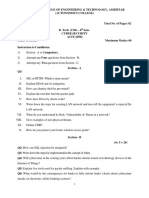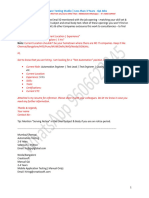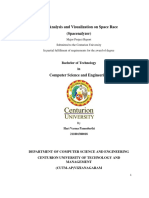0% found this document useful (0 votes)
90 views57 pagesLec Database
1. The document discusses the concepts of data, databases, and the relational database model. It defines data as raw values that require interpretation to become meaningful information.
2. A database is described as a collection of logically related data that can be queried to provide answers. Examples of common databases are given.
3. The relational database model organizes data into tables (relations) with rows (tuples) and columns (attributes). Primary keys uniquely identify each record while foreign keys define relationships between tables.
Uploaded by
Mahmoud ElshetewyCopyright
© © All Rights Reserved
We take content rights seriously. If you suspect this is your content, claim it here.
Available Formats
Download as PDF, TXT or read online on Scribd
0% found this document useful (0 votes)
90 views57 pagesLec Database
1. The document discusses the concepts of data, databases, and the relational database model. It defines data as raw values that require interpretation to become meaningful information.
2. A database is described as a collection of logically related data that can be queried to provide answers. Examples of common databases are given.
3. The relational database model organizes data into tables (relations) with rows (tuples) and columns (attributes). Primary keys uniquely identify each record while foreign keys define relationships between tables.
Uploaded by
Mahmoud ElshetewyCopyright
© © All Rights Reserved
We take content rights seriously. If you suspect this is your content, claim it here.
Available Formats
Download as PDF, TXT or read online on Scribd
/ 57


